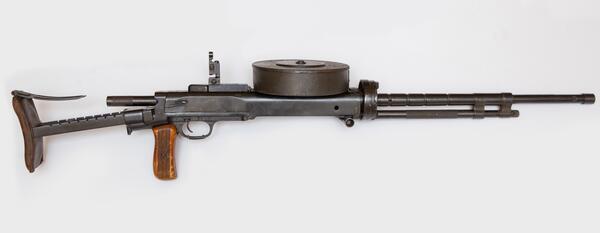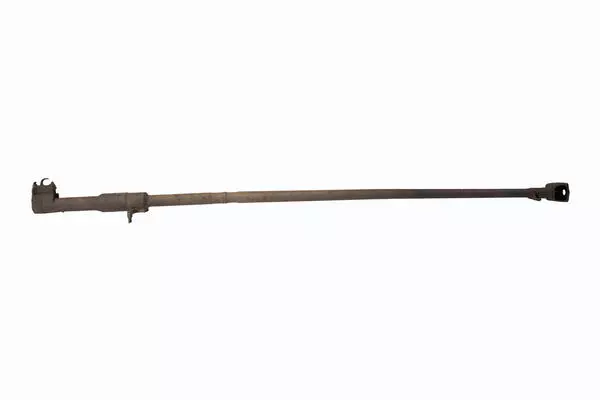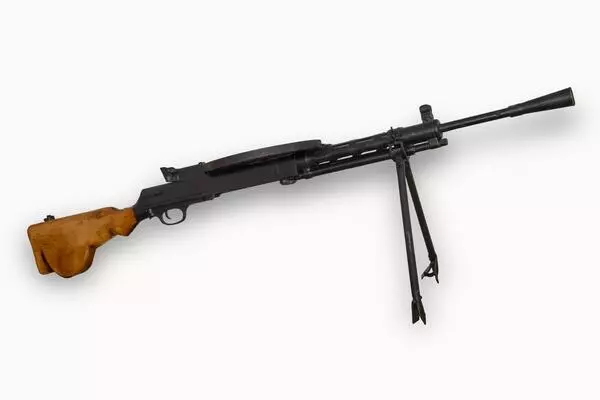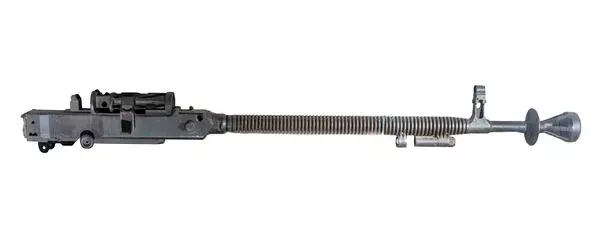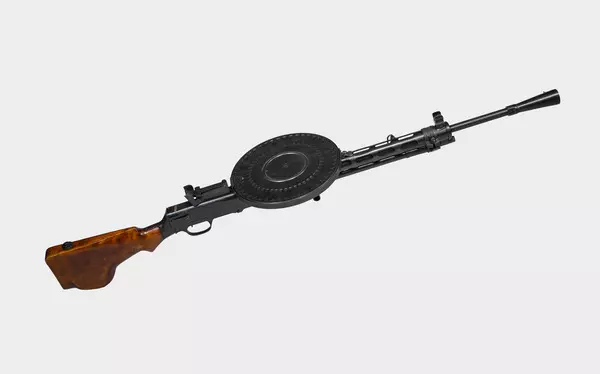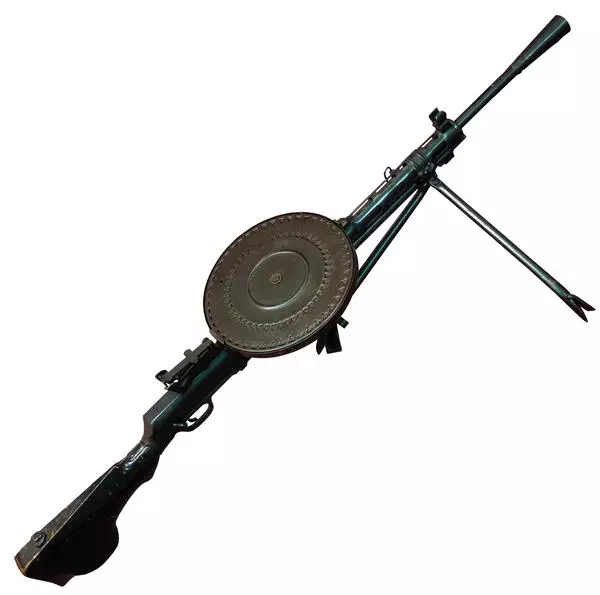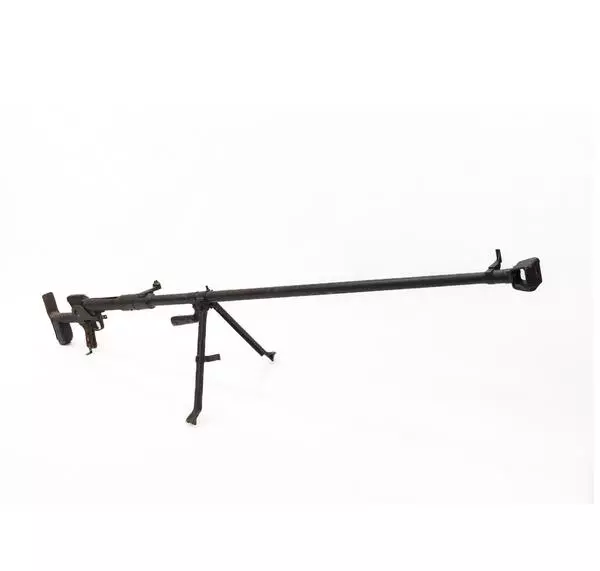The exhibition titled “The Feat of the Army” includes the famous Degtyaryov tank machine gun. For a long time, it was considered the gold standard of weaponry. The history of this gun began after the Russian Civil War when the army needed to replace foreign weapons. At that time, the Soviet Union was already producing its own rifles and Nagant revolvers, but the light machine guns required improvement.
The talented weapons designer Vasily Alekseyevich Degtyaryov started working on this gun upon his own initiative in 1921. The design was based on the automatic carbine.
When the Red Army’s Firearms Committee announced a competition to design a new weapon, Degtyaryov presented his project. However, it was only accepted after certain design improvements. The machine gun passed the tests and was adopted into service.
The Degtyaryov machine gun was reliable and easy to produce. Instead of wood, the buttstock was made of metal. The 63-round magazine was less cumbersome than that of other similar firearms. Moreover, the gun was equipped with a ball mount that allowed firing in various planes. The mount was invented by another famous weapons designer Georgy Semyonovich Shpagin. The new firearms were first used in the Russian Far East in 1929.
The Degtyaryov machine guns were actively used during the Great Patriotic War. During the first months of the war, an unusual scene could often be observed. Among the Soviet infantrymen, there were some soldiers dressed in blue overalls and equipped with unique compact machine guns. These were the crew members of knocked-out, blasted, or abandoned tanks who took Degtyarov machine guns from their vehicles and continued fighting alongside foot soldiers.
In 1944, the machine gun was once again modified to improve its reliability and controllability. The design of several components was changed so that they could be produced by stamping. The recoil spring was moved into the trigger-guard group. The improved machine gun was known as the DTM. Its mass production began in 1945 and continued after the war when the DTM became the standard machine gun of Soviet tanks and other armored vehicles.
The talented weapons designer Vasily Alekseyevich Degtyaryov started working on this gun upon his own initiative in 1921. The design was based on the automatic carbine.
When the Red Army’s Firearms Committee announced a competition to design a new weapon, Degtyaryov presented his project. However, it was only accepted after certain design improvements. The machine gun passed the tests and was adopted into service.
The Degtyaryov machine gun was reliable and easy to produce. Instead of wood, the buttstock was made of metal. The 63-round magazine was less cumbersome than that of other similar firearms. Moreover, the gun was equipped with a ball mount that allowed firing in various planes. The mount was invented by another famous weapons designer Georgy Semyonovich Shpagin. The new firearms were first used in the Russian Far East in 1929.
The Degtyaryov machine guns were actively used during the Great Patriotic War. During the first months of the war, an unusual scene could often be observed. Among the Soviet infantrymen, there were some soldiers dressed in blue overalls and equipped with unique compact machine guns. These were the crew members of knocked-out, blasted, or abandoned tanks who took Degtyarov machine guns from their vehicles and continued fighting alongside foot soldiers.
In 1944, the machine gun was once again modified to improve its reliability and controllability. The design of several components was changed so that they could be produced by stamping. The recoil spring was moved into the trigger-guard group. The improved machine gun was known as the DTM. Its mass production began in 1945 and continued after the war when the DTM became the standard machine gun of Soviet tanks and other armored vehicles.


